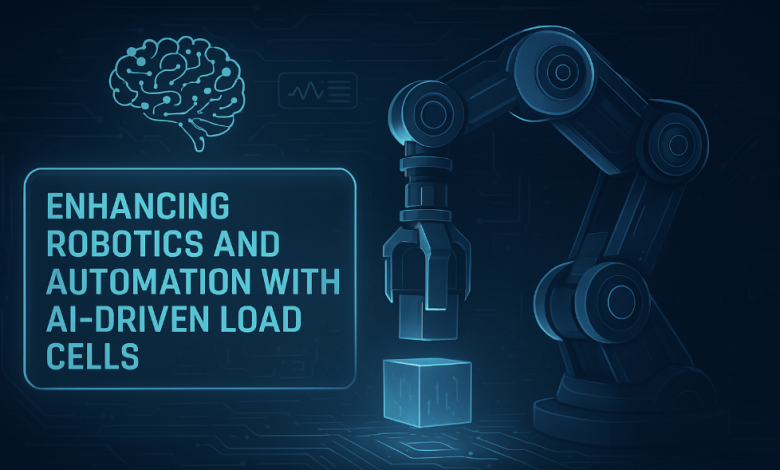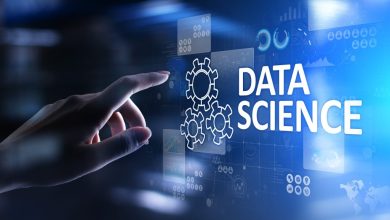
Precision has always been the backbone of effective robotics and automation. As systems take on increasingly sophisticated tasks from assembling microscopic components to safely collaborating with human workers, the ability to sense, interpret, and respond to forces becomes integral. Robots no longer operate in their cells, performing repetitive actions; they navigate dynamic environments, handle fragile materials, and make real time adjustments. In this context, precision sensing is hardly a nicety; it is a core enabler. Of all the things that might be measured, force plays a defining role in determining just how well a robot understands its physical interaction with the world. The quest for accuracy, safety, and operational intelligence has brought renewed focus on load cells, and with the integration of AI, these once simple devices are rapidly becoming sophisticated sensing systems that elevate the capabilities of modern automation.
Understanding Load Cells and Their Role in Robotic Force Measurement
Load cells themselves are nothing new. At the core, they are transducers that convert an applied force into a measurable electrical signal. Most of them depend on strain gauges bonded to a metal structure that deforms predictably under load. The resulting change in electrical resistance reflects the amount of force applied, thus enabling the robot to detect weight, tension, compression, or multi directional force inputs. In robotics, load cells can differ widely depending on the operation. Miniature load cells fit into compact robotic grippers or surgical instruments where space is at a premium. Multi axis load cells measure forces and moments across several dimensions, providing the robot with more detail about its interactions, a key capability for applications including humanoid robots and precision assembly. Classic tension and compression load cells support lifting, pressing, and pulling functions, with applications in industrial automation.
Limitations of Traditional Load Cells in Modern Robotics
Despite their widespread adoption, traditional load cells inherently possess certain limitations that act as a barrier to performance in the new dimensions of robotics. Susceptibility to temperature fluctuations, electromagnetic interference, and mechanical drift can introduce noise in the output. Mechanical fatigue over the time could cause calibration issues or inconsistent readings. These weaknesses, if used in highly dynamic or unpredictable environments, might greatly affect the twin concerns of safety and accuracy. Until recently, attaining these features required engineers to carefully design the mechanical structure and perform laborious calibration routines by hand. Today, AI is offering a radically new approach: it transforms load cells into intelligent components capable of learning, adapting, and improving over time.
Transforming Load Cell Performance and Capability
The integration of AI into load cell systems introduces a quantum leap in sensing performance. Machine learning algorithms filter out the noise, compensate for environmental changes and spot subtle variations in the force signature that will be invisible to conventional electronics. Rather than rely on static calibration curves, an AI driven load cell continually refines its measurements based on real-world data. Adaptive filtering techniques enable sensors to make a distinction between true applied forces and spurious distortions due to vibration, thermal effects, or mechanical resonance.
Real Time Monitoring and Edge Intelligence for Faster Robotic Response
Another big advance enabled by AI is real time monitoring. Traditional load cells output raw data; this raw data must be interpreted by a controller. AI enhanced systems do the interpretation at the edge, delivering processed insights rather than simple values. This dramatically reduces latency in control loops, a critical factor in high speed automation and sensitive manipulation tasks. For example, a fragile component robotic arm sortation application requires sensing force changes and reacting within milliseconds. AI lets it do so more reliably even as environmental conditions change.
AI Driven Predictive Maintenance for Increased Uptime and Longevity
AI also makes predictive maintenance far more practical. Processing sets of historical force data and sifting for patterns indicative of wear, drift, or an imminent failure, an AI model can notify a technician well in advance of problems showing themselves. For high-throughput production lines, the ability to avoid unexpected periods of downtime is invaluable. Instead of periodic manual inspections, systems can now rely on intelligent diagnostics that continuously monitor sensor health. This prolongs the life of a load cell, enhances general equipment effectiveness, and reduces operating costs for maintenance.
Smarter Decision Making in Robotics
Perhaps the most compelling benefit of AI driven load cells is their ability to translate raw force data into meaningful insights. Rather than serving as passive measurement devices, they become active contributors to decision making. Algorithms detect anomalies, recognize patterns, and infer context such as whether a robot is gripping an object too tightly or encountering unexpected resistance during assembly. It is this shift from measurement to interpretation that enables the next generation of robotic intelligence.
Grip Control, Force Feedback, and Enhanced Safety
Nowhere is this transformation clearer than in the key applications that are shaping automation today. Consider robotic gripping, for instance, where a balance of strength and delicacy is achieved. A robot that has to pack soft produce, handle laboratory samples, or manipulate irregularly shaped objects has to adjust grip force constantly to avoid any sort of damage. AI-driven load cells provide nuanced feedback for interpreting shape, weight, and fragility in real time. With continuous learning, robots can even improve their handling strategies based on past interactions. Similarly important is the function of force feedback in advanced robotics: small variations in force can spell the difference between success and failure in assembly tasks involving fitting components or tightening fasteners. AI enhanced sensors support finer dexterity that enables a robot to mirror the intuitive adjustments of a skilled human worker. One segment that benefits most from this capability is collaborative robotics, where better force sensitivity equips a robot to adapt its movements to those of its human partners and thereby enhances productivity and trust in shared workspaces. Safety is another core area where clear value is demonstrated by AI-driven load cells: detecting overload becomes even more reliable when sensors can distinguish between normal variations and genuine hazards. In environments where robots are operating alongside people, split second decisions can prevent injuries. The AI system could recognize whether a robot’s path is obstructed or if force levels are higher than safe thresholds by interpreting force patterns. Instead of pure reaction to predefined limits, AI models would consider the context and offer a more intelligent layer of protection.
Smart Sensor Networks, Digital Twins, and Edge AI Sensing
The future of AI powered load cells will be one of innovation and further integration with larger automation ecosystems. Smart sensor networks could connect several AI powered load cells on a factory floor into a distributed force-intelligence system feeding data back into a central analytics platform. Digital twins thought of as virtual copies of robots or an entire production line-can use the data from sensors to simulate forces, predict failures, and optimize performance even before real-world operations start. As more and more processing shifts to the edge, even load cells themselves may handle higher-order tasks, such as force classification or anomaly detection, without requiring controllers.
Emerging Applications in Surgical Robotics and Micro Automation
The need for even more sophisticated sensing arises with emerging industries. In surgical robotics, ultra miniature load cells can offer superior haptic feedback through AI-enhanced precision to the surgeons during delicate procedures that require steady control and sensitive recognition of forces. Enhanced force sensing also benefits micro automation-the manipulation of components too small for conventional tools. The more robots are called upon to mimic human tactile perception, the more indispensable intelligent load cells become.
Complexity, Data Demands, and Standardization
Challenges remain, however. Generally speaking, the integration of AI into sensors increases the complexity of the system, with strong computational resources-often particularly significant in compact or power limited applications. The data requirements for effective training can be high and raise considerations around privacy, storage, and transmission. Standardization is another emerging issue with AI transforming the capabilities of sensors; it will be necessary for industry-wide guidelines to ensure interoperability and safety. Cost could also play a determining role in the early days of adoption, although, hopefully, economies of scale and technological maturity will eventually drive down costs. Yet despite this, the longer term trajectory is toward deeper and more seamless integration of AI into sensing technologies. Already today, the shift from passive load cells to intelligent, adaptive sensors changes the way robots feel and perceive their world. As AI continues to improve their accuracy and responsiveness, and probably above all, their decision-making capability, load cells cease being simple instruments but rather enablers of smarter, safer, and more autonomous automation.
The Transformative Impact of AI Driven Load Cells on Next Generation Robotics
AI driven load cells form a milestone marking critical evolution in robotics. While improving precision, enabling predictive maintenance, and ensuring richer context through sensing, it changes the traditionally supportive function of sensing into a centerpiece in robotic intelligence. Their influence is visible across many applications that improve dexterity, adaptability, and safety across diverse environments where robots will need to perform increasingly complex tasks. While automation proceeds towards greater autonomy and collaboration, integration with AI enhanced sensing will be critical. In the next generation, robotic systems will depend not only on strength and speed but also on perception—taking us closer to machines that understand their world as intuitively as humans do.




